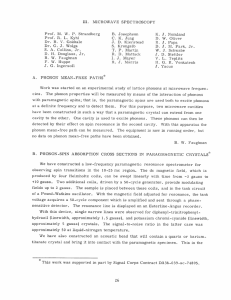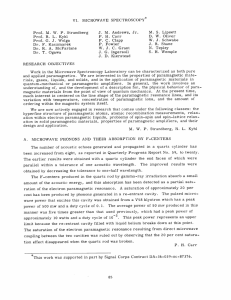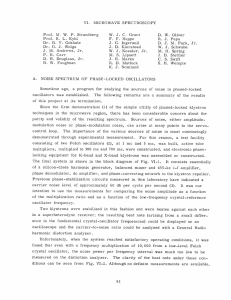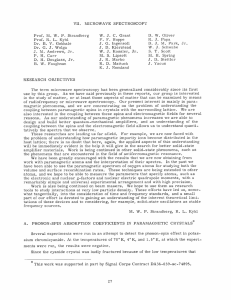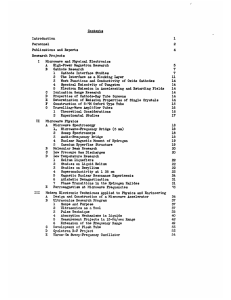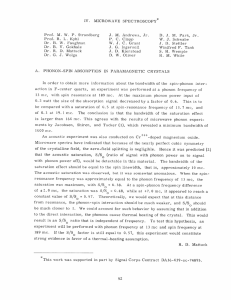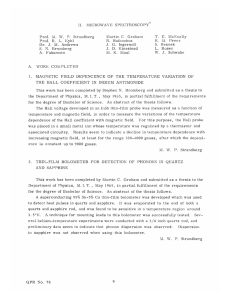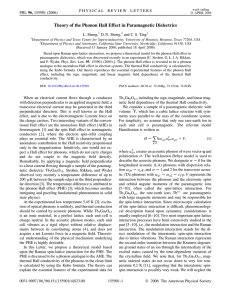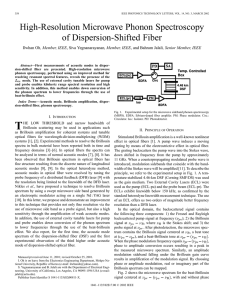IV. MICROWAVE SPECTROSCOPY Prof. M. W. P. Strandberg
advertisement
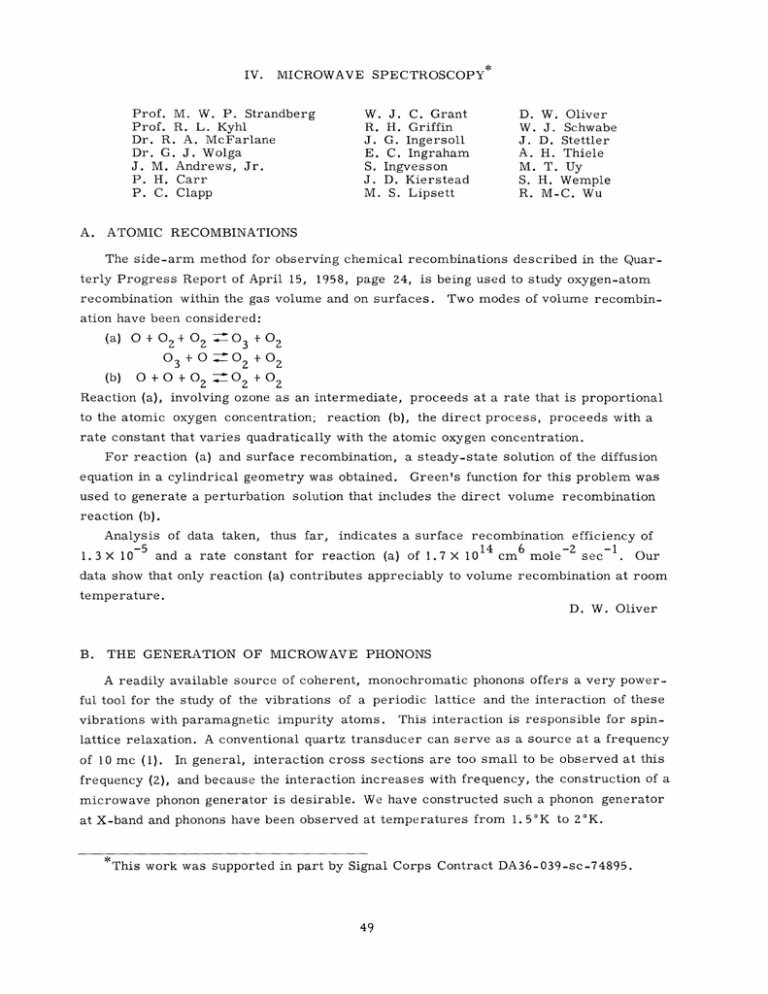
IV. MICROWAVE SPECTROSCOPY Prof. M. W. P. Strandberg Prof. R. L. Kyhl Dr. R. A. McFarlane Dr. G. J. Wolga J. M. Andrews, Jr. P. H. Carr P. C. Clapp A. W. R. J. E. S. J. M. J. C. Grant H. Griffin G. Ingersoll C. Ingraham Ingvesson D. Kierstead S. Lipsett D. W. J. A. M. S. R. W. Oliver J. Schwabe D. Stettler H. Thiele T. Uy H. Wemple M-C. Wu ATOMIC RECOMBINATIONS The side-arm method for observing chemical recombinations described in the Quar- terly Progress Report of April 15, 1958, page 24, is being used to study oxygen-atom recombination within the gas volume and on surfaces. Two modes of volume recombin- ation have been considered: (a) O + 0O3+0 03 + O (b) O + O + 0 2 0 203 0O 2 + 02 + O2 Reaction (a), involving ozone as an intermediate, proceeds at a rate that is proportional to the atomic oxygen concentration; reaction (b), the direct process, proceeds with a rate constant that varies quadratically with the atomic oxygen concentration. For reaction (a) and surface recombination, a steady-state solution of the diffusion equation in a cylindrical geometry was obtained. Green's function for this problem was used to generate a perturbation solution that includes the direct volume recombination reaction (b). Analysis of data taken, 1. 3 X 10 -5 thus far, indicates a surface recombination efficiency of and a rate constant for reaction (a) of 1.7 X 10 14 cm 6 mole -2 sec -1 . Our data show that only reaction (a) contributes appreciably to volume recombination at room temperature. D. W. Oliver B. THE GENERATION OF MICROWAVE PHONONS A readily available source of coherent, ful tool for the study of the vibrations monochromatic phonons offers a very power- of a periodic lattice and the interaction of these vibrations with paramagnetic impurity atoms. This interaction is responsible for spin- lattice relaxation. A conventional quartz transducer can serve as a source at a frequency of 10 mc (1). In general, interaction cross sections are too small to be observed at this frequency (2), and because the interaction increases with frequency, the construction of a microwave phonon generator is desirable. We have constructed such a phonon generator at X-band and phonons have been observed at temperatures from 1. 5 0 K to 2 0 K. *This work was supported in part by Signal Corps Contract DA36-039-sc-74895. (IV. MICROWAVE SPECTROSCOPY) Phonon packets are generated by means of the piezoelectric effect at the end surface of a quartz rod inserted into the high electric-field region of a re-entrant cavity that is driven by a pulsed microwave source (3). These packets travel down the rod, are reflected from the other end, and return to the generating surface where a small fraction of the acoustic energy is converted into microwave energy. This energy is detected by means of a superheterodyne receiver. As many as eight acoustic echoes have been observed (Fig. IV-1). The number is critically dependent upon the tolerances to which the quartz rod is cut. Fig. IV-1. Oscilloscope trace of phonon packets as a function of time. (Separation between pulses, 10 Ipsec; time increases toward the left.) After observing the acoustic echoes, we irradiated the quartz rod with gamma rays 60 from a Co source in order to produce paramagnetic F-centers. No decrease in the number of echoes was observed after irradiation. The end of the rod opposite the phonon-generating surface was inserted into a rectangular cavity in which the electron paramagnetic resonance was observed, but no saturation effects from a phonon-spin interaction were observed. Since present detection sensitivity is already high, our efforts will be directed toward increasing the absorbed energy by increasing the acoustic power level. P. H. Carr References 1. R. D. Mattuck, Phonon-spin absorption cross sections in paramagnetic crystals, Quarterly Progress Report, Research Laboratory of Electronics, M.I. T., July 15, 1958, pp. 26-27. 2. R. D. Mattuck, Phonon-Spin Absorption in Paramagnetic Crystals, Ph. D. Thesis, Department of Physics, M.I. T., May 1959. 3. Conversations and correspondence with E. H. Jacobsen of General Electric Research Laboratories, Schenectady, N. Y., have been of great use to us in designing this generator.
